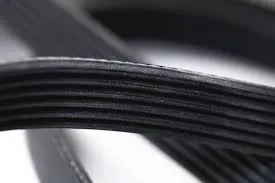- Arabic
- French
- Russian
- Spanish
- Portuguese
- Turkish
- Armenian
- English
- Albanian
- Amharic
- Azerbaijani
- Basque
- Belarusian
- Bengali
- Bosnian
- Bulgarian
- Catalan
- Cebuano
- Corsican
- Croatian
- Czech
- Danish
- Dutch
- Afrikaans
- Esperanto
- Estonian
- Finnish
- Frisian
- Galician
- Georgian
- German
- Greek
- Gujarati
- Haitian Creole
- hausa
- hawaiian
- Hebrew
- Hindi
- Miao
- Hungarian
- Icelandic
- igbo
- Indonesian
- irish
- Italian
- Japanese
- Javanese
- Kannada
- kazakh
- Khmer
- Rwandese
- Korean
- Kurdish
- Kyrgyz
- Lao
- Latin
- Latvian
- Lithuanian
- Luxembourgish
- Macedonian
- Malgashi
- Malay
- Malayalam
- Maltese
- Maori
- Marathi
- Mongolian
- Myanmar
- Nepali
- Norwegian
- Norwegian
- Occitan
- Pashto
- Persian
- Polish
- Punjabi
- Romanian
- Samoan
- Scottish Gaelic
- Serbian
- Sesotho
- Shona
- Sindhi
- Sinhala
- Slovak
- Slovenian
- Somali
- Sundanese
- Swahili
- Swedish
- Tagalog
- Tajik
- Tamil
- Tatar
- Telugu
- Thai
- Turkmen
- Ukrainian
- Urdu
- Uighur
- Uzbek
- Vietnamese
- Welsh
- Bantu
- Yiddish
- Yoruba
- Zulu
Aug . 19, 2024 22:07 Back to list
Optimizing Auto Timing Belt Maintenance for Enhanced Engine Performance and Longevity
Understanding Timing Belts Importance, Maintenance, and Replacement
The timing belt is a crucial component in an internal combustion engine, playing a key role in the synchronization of various mechanical parts. Typically made of high-strength rubber and reinforced with nylon or fiberglass, the timing belt is designed to withstand the extreme environment of an engine while ensuring that the crankshaft and camshaft operate in harmony. This article delves into the significance of the timing belt, how it functions, signs of wear, and the importance of timely replacement.
Function and Importance of Timing Belts
In a conventional four-stroke engine, the timing belt connects the crankshaft, which turns the pistons, to the camshaft, which controls the opening and closing of the engine’s valves. The precise alignment and synchronization of these components are vital for the engine's proper performance. A well-maintained timing belt ensures optimal engine efficiency, improved fuel economy, and reduced emissions. Conversely, a worn or broken timing belt can lead to catastrophic engine failure, resulting in expensive repairs.
Signs of Wear and Tear
As the timing belt ages, it is susceptible to wear and tear due to exposure to heat, oil, and chemical contaminants. Mechanics recommend regular inspections to identify potential issues early. Common signs of a failing timing belt include audible noise coming from the engine, visible wear or fraying on the belt, and oil leaks around the timing cover. If drivers notice any of these symptoms, it is crucial to have the vehicle inspected by a professional as soon as possible to avoid severe engine damage.
Maintenance and Replacement Schedule
auto timing bel

Timing belts generally have a lifespan of about 60,000 to 100,000 miles, but this can vary significantly based on the make and model of the vehicle and the driving conditions. Manufacturers usually provide specific recommendations in the owner’s manual for when to replace the timing belt. Regular maintenance, such as checking the belt's tension and condition, can extend its life span.
It's important to note that timing belt replacement should not be taken lightly. A belt rupture can cause the pistons and valves to collide, leading to bent valves, damaged pistons, and a costly engine rebuild. Thus, adhering to the recommended replacement schedule is essential for maintaining engine health.
The Replacement Process
Replacing a timing belt is a complex task that often requires specialized knowledge and tools. Typically, the process involves removing several components to access the timing belt, including the timing cover, pulleys, and water pump (if applicable). Mechanics will also often recommend changing the tensioner and idler pulleys during this process, as worn components can lead to premature belt failure.
After installing the new timing belt, it's essential to verify that the timing is correctly aligned and that everything is reassembled properly to avoid potential issues. A professional mechanic has the experience and tools necessary to ensure that the replacement is done efficiently and accurately.
Conclusion
The timing belt is an integral part of an engine’s operation, and understanding its function, signs of wear, and replacement schedule is vital for vehicle owners. Timely maintenance can lead to substantial long-term savings by avoiding serious engine damage and ensuring the vehicle runs smoothly. Regular check-ups and adherence to replacement recommendations will keep your timing belt—and your engine—functioning optimally. Remember that an ounce of prevention is worth a pound of cure; a simple replacement can save drivers from the headaches and costs associated with engine repairs due to timing belt failure.
-
Upgrade Power Steering Pump Belt for Smooth, Quiet Operation
NewsAug.27,2025
-
Precision Timing Belt & Chain: Engine Performance & Durability
NewsAug.26,2025
-
Precision Lathe Drive Belts: Durable & Reliable Performance
NewsAug.25,2025
-
84.5 Serpentine Belt: Durable & Precision Fit for Your Engine
NewsAug.24,2025
-
Premium Ribbed Drive Belts for Quiet Power Transmission
NewsAug.23,2025
-
High-Performance Vehicle Timing Belt for Engine Precision
NewsAug.22,2025

